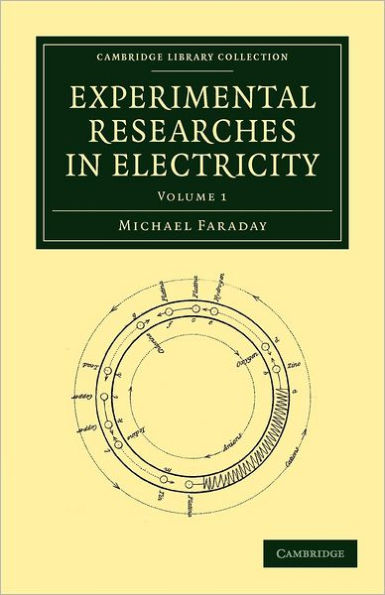Experimental Researches in Electricity
Originally apprenticed to a bookbinder, Michael Faraday (1791-1867) began to attend Sir Humphrey Davy's chemistry lectures purely out of interest. Although he soon recognised that science would be his vocation, there was no defined career path to follow, and when he applied to Davy for work he was gently told to 'attend to the bookbinding'. It was only after a laboratory explosion in which Davy partially lost his sight that Faraday was taken on as his amanuensis. From this difficult beginning stemmed perhaps the most famous scientific career of the nineteenth century. This three-volume collection of Faraday's papers provides a comprehensive record of a key branch of his work. Volume 1, reissued here in a second edition of 1849, covers his early work in electricity and magnetism, including papers on lightning, electric fish, and notes on the elaborate and often beautiful experiments conducted to investigate whether magnetism could produce electricity.
1117034649
Experimental Researches in Electricity
Originally apprenticed to a bookbinder, Michael Faraday (1791-1867) began to attend Sir Humphrey Davy's chemistry lectures purely out of interest. Although he soon recognised that science would be his vocation, there was no defined career path to follow, and when he applied to Davy for work he was gently told to 'attend to the bookbinding'. It was only after a laboratory explosion in which Davy partially lost his sight that Faraday was taken on as his amanuensis. From this difficult beginning stemmed perhaps the most famous scientific career of the nineteenth century. This three-volume collection of Faraday's papers provides a comprehensive record of a key branch of his work. Volume 1, reissued here in a second edition of 1849, covers his early work in electricity and magnetism, including papers on lightning, electric fish, and notes on the elaborate and often beautiful experiments conducted to investigate whether magnetism could produce electricity.
79.0
Out Of Stock
5
1

Experimental Researches in Electricity
596
Experimental Researches in Electricity
596Related collections and offers
79.0
Out Of Stock

Product Details
| ISBN-13: | 9781108053570 |
|---|---|
| Publisher: | Cambridge University Press |
| Publication date: | 10/11/2012 |
| Series: | Cambridge Library Collection - Physical Sciences |
| Pages: | 596 |
| Product dimensions: | 5.51(w) x 8.50(h) x 1.34(d) |
About the Author
From the B&N Reads Blog
